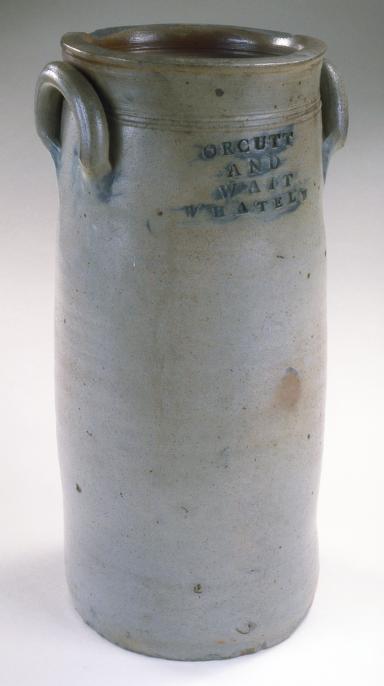




Advanced Search
| Online Collection |
|
||||||||||||||||||||||
|
The stoneware churn, produced during the partnership of Orcutt and Wait during a nine-month period in 1816, was used in butter-making. The clay for stoneware vessels produced in Whately was transported by water from New Jersey to Massachusetts. After the vessels were formed and placed in the kiln and a high temperature reached, table salt was thrown in to create a glaze, referred to as a "salt" glaze. The glaze produced a shiny surface. The clay is non-porous, unlike earthenware. Often the potters' names are impressed into the jar and the letters rubbed with cobalt to produce a blue contrast to the gray stoneware.
|
Stoneware Churn
|
| |
Home | Online Collection | Things
To Do | Turns
Exhibit | Classroom | Chronologies | My
Collection
About This Site | Site Index | Site Search | Feedback


